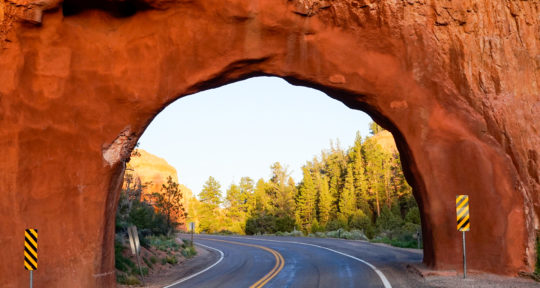When you enter the Anna Scripps Whitcomb Conservatory, you immediately encounter the first of five distinct climates within the building. The Palm House—kept at 70 degrees—holds a variety of exotic palms and tropical trees under the glass dome. Though the ceiling is vaulted, palm trees can’t be pruned to height, which means when a tree grows too tall for the enclosure, it has to be cut down entirely. Only one palm tree has been removed to date.
Still, with so many thriving palms, walking into the conservatory feels like walking into a tropical forest; one that happens to live in the heart of Detroit, Michigan.
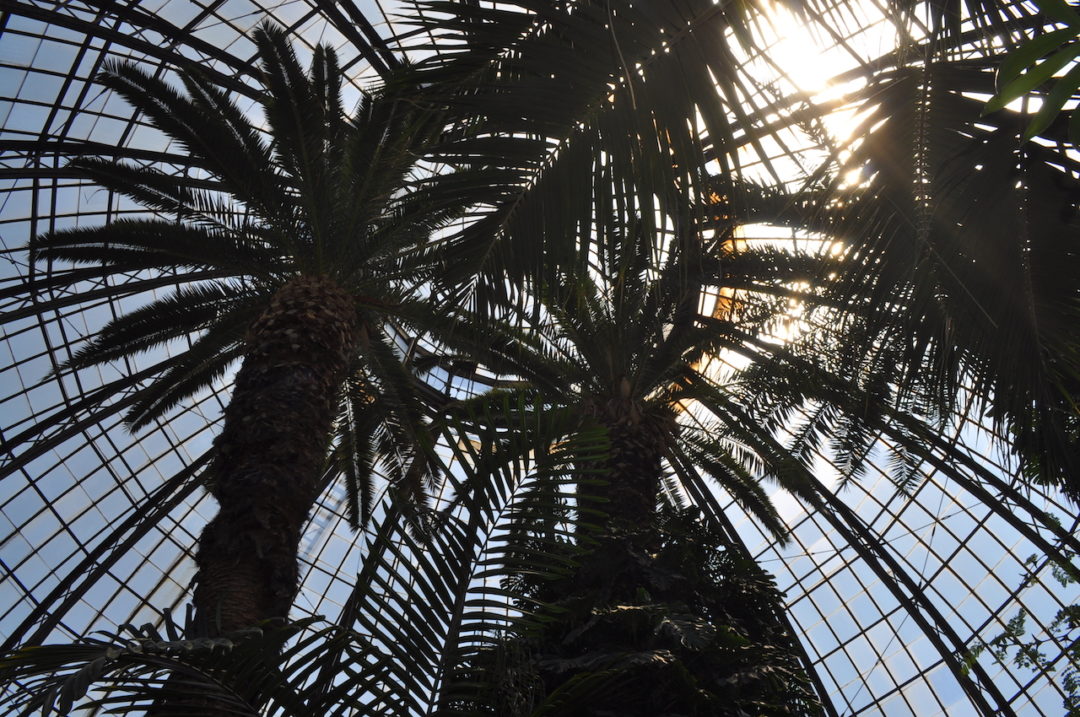
That 85-foot glass dome has recently undergone extensive structural renovations, keeping the most-visited attraction on Belle Isle closed to the public for months. “We worked with Montgomery Smith, Inc. to consult on replacing the 21 steel trusses that support the dome,” says Amanda Treadwell, an urban area field planner with the Michigan Department of Natural Resources. The original trusses, she says, were crumbling under years of water damage—a liability when maintaining such a large and airy glass building for 115 years.
The archetypal design of the conservatory building only adds to the feeling of entering into another world, one where the best aspects of civilization and nature meet. Sun shines in from every angle through the ceiling and walls, a hallmark of the Lord and Burnham style the conservatory was modeled after, enabling unlikely plants from every part of the globe to thrive in Detroit’s native climate. The conservatory was originally built in 1904 by local architectural legend Albert Kahn, so the renovations included careful consideration of how modern materials would impact the look of the historic landmark. Montgomery Smith, Inc., the historic preservation firm that’s worked on a long list of 19th- and 20th-century conservatory renovations, matched the new components to the original trusses so carefully, you can hardly see what was done.
Step into a beautiful dream
Although the renovation project cost $2.5 million, the seamless repair allows you to slip into the magic of the place itself, under the same spell the building must’ve cast on visitors in 1904. Following the path deeper into the conservatory, your next stop is the Tropical House, also kept at 70 degrees, although—thanks to the windows, abundant sunshine, and humidity of tropical plants—it feels much warmer. The Tropical room houses fruiting plants and trees, including common figs, calamondin oranges, bananas, and a single pineapple sprouting proudly from a planter.
-
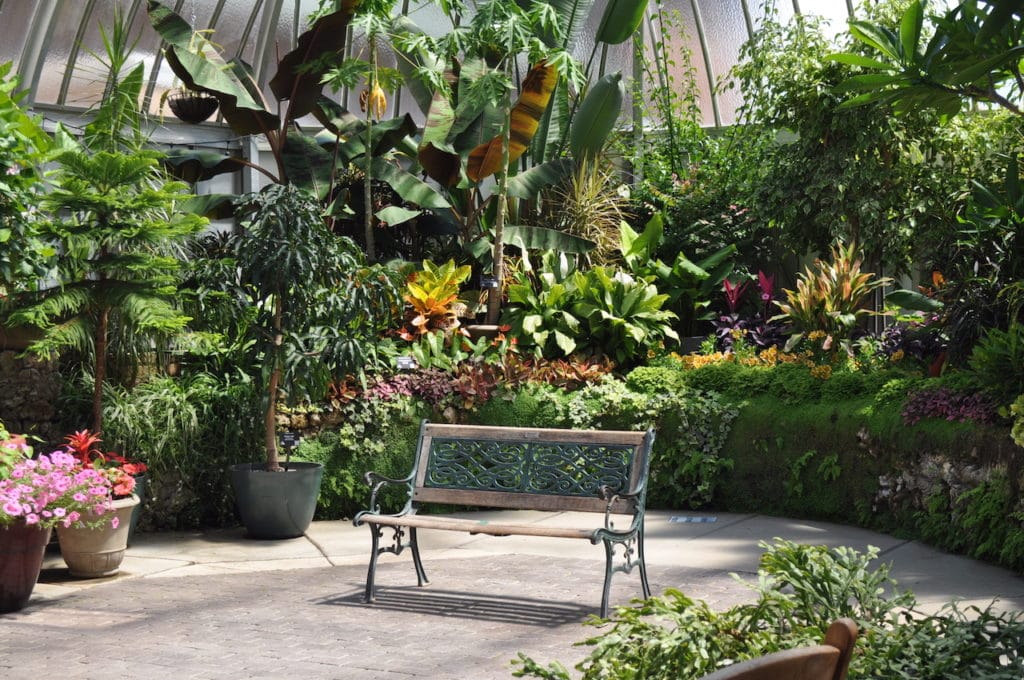
A place to rest among tropical plants. | Photo: Lana Goodrich -
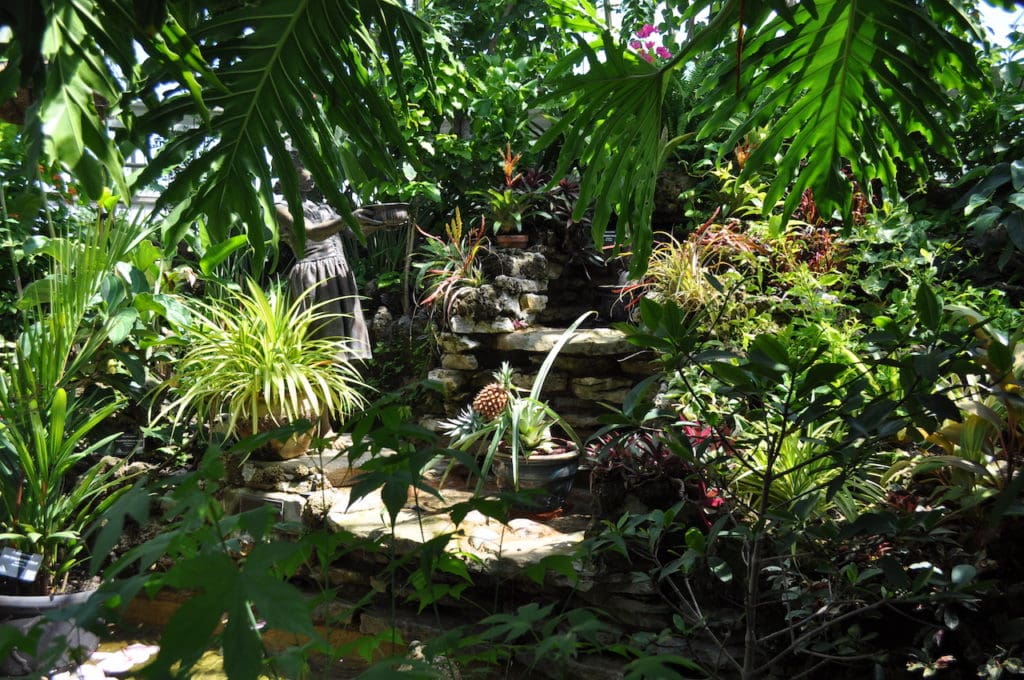
Photo: Lana Goodrich -
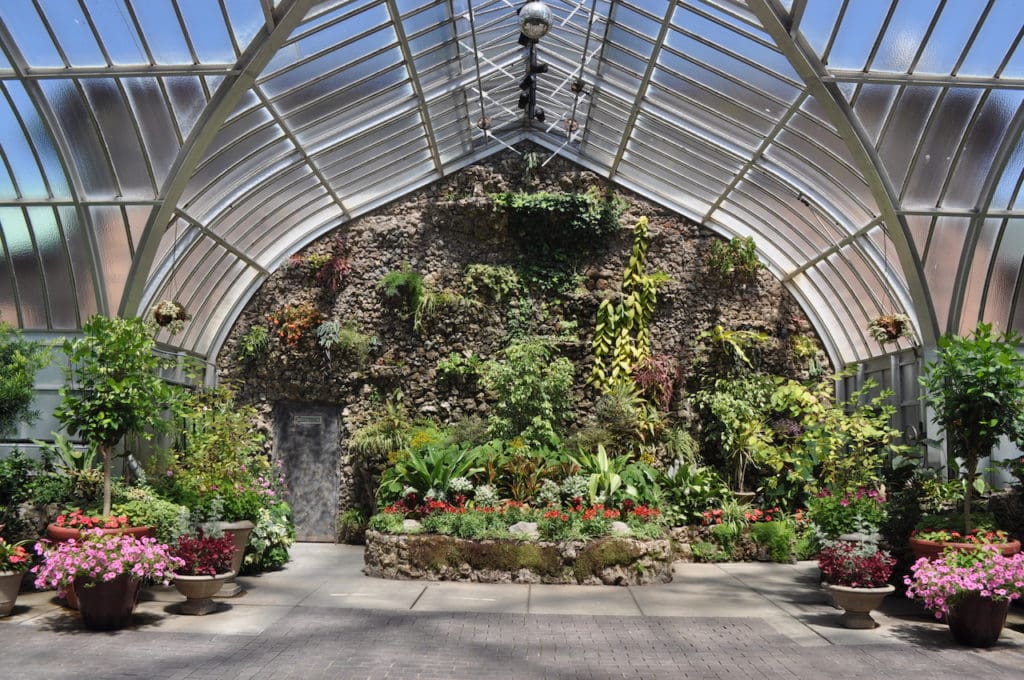
The special event space in the Show House. | Photo: Lana Goodrich -
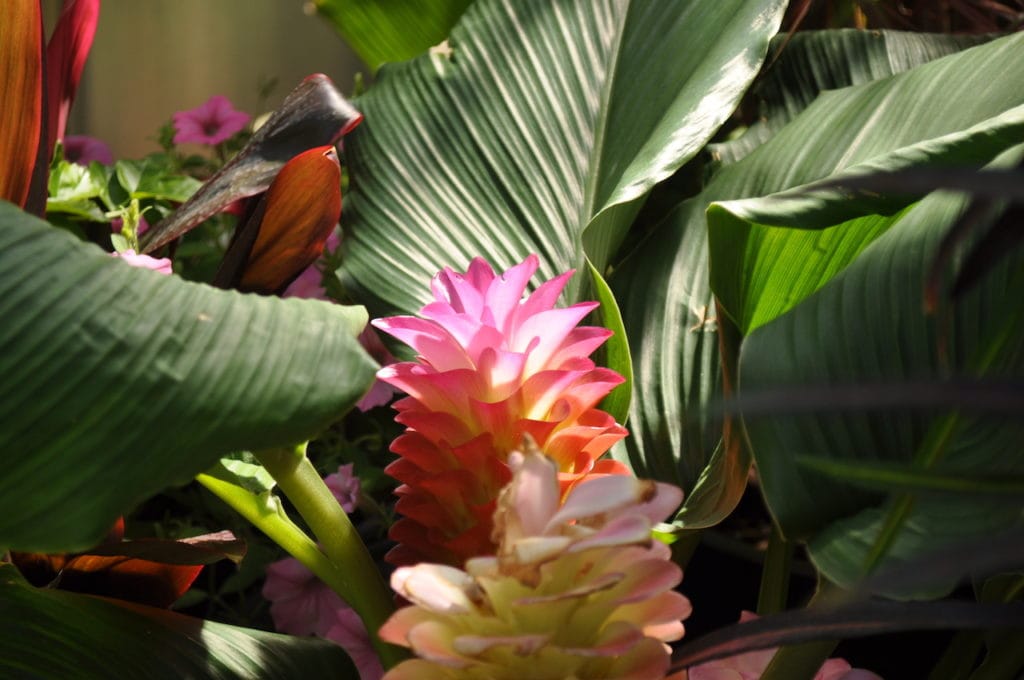
A pink tropical flower peeks out of green flora. | Photo: Lana Goodrich -
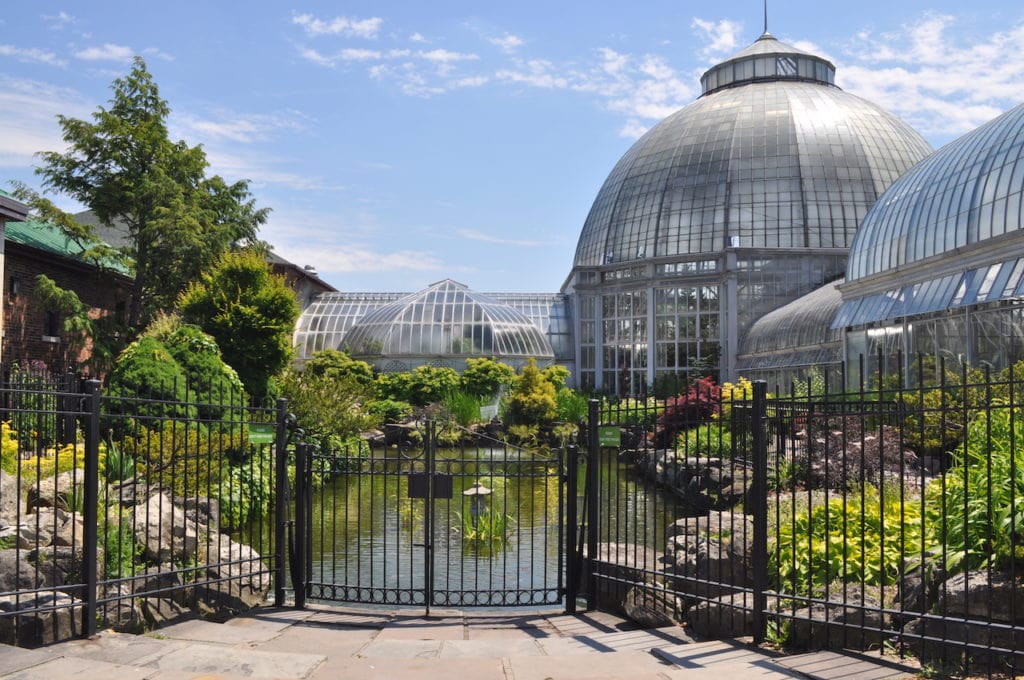
The exterior of the Conservatory, dotted with plants. | Photo: Lana Goodrich
Colorful, unfamiliar plants—with names like Spider Lily, Stingray Alocasia, and Jungle Flame—also thrive in the Tropical House, looking both beautiful and ominous. Amaryllis flowers bloom as big as an open hand. Red Lantern hibiscus flowers dangle in clusters from trees, begging for a closer look, while Powderpuff flowers explode from branches like a riot of fireworks. A giant Lacy Tree Philodendron’s branches wind and curve between stilted roots like the tentacles of a misplaced sea creature.
The path, one-way for those who follow signs, circles the Tropical House and exits at its entrance, nudging guests toward the Show House and the Lily Pond Garden. The collection of plants in the Show House change throughout the year, and the space is used for the many flower shows held by the Conservatory and special events like weddings.
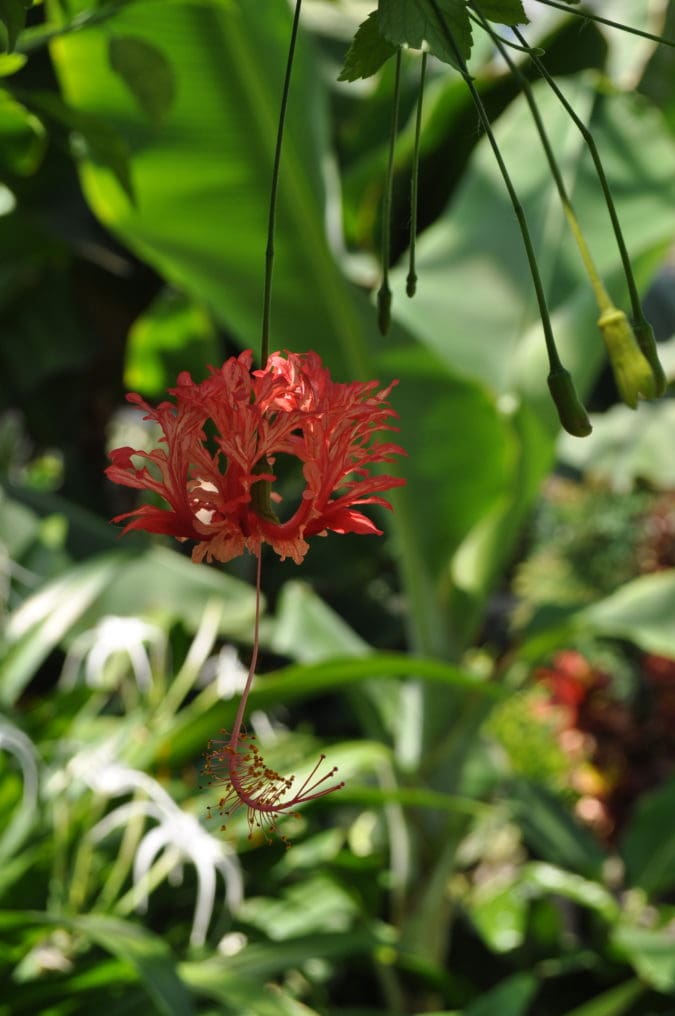
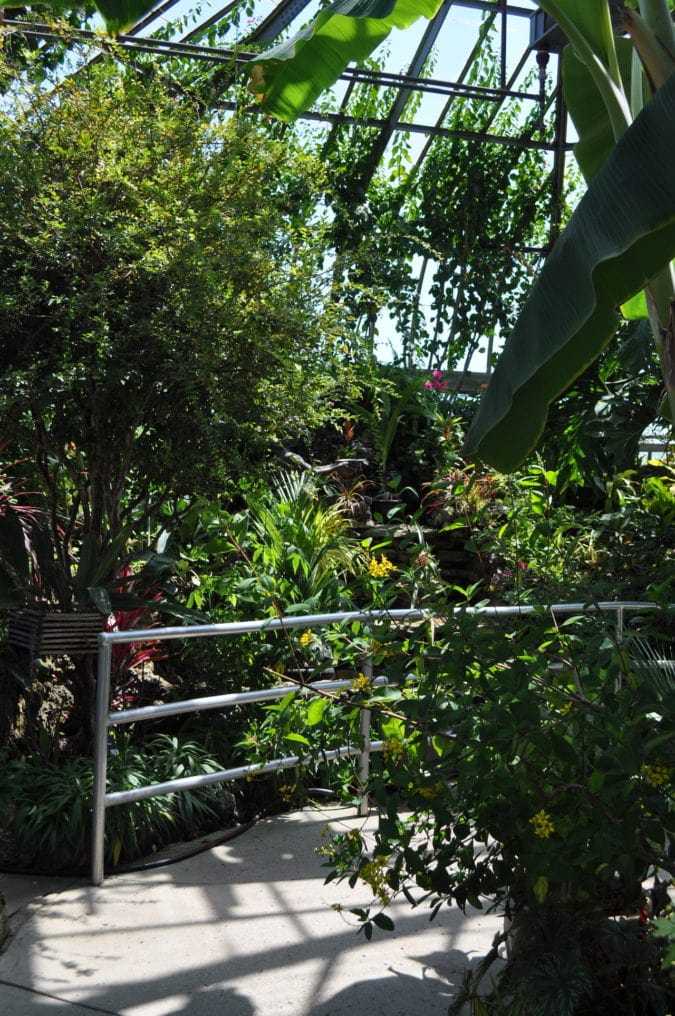
Stepping outside through a side door, the fenced-in Lily Pond Garden shades the water and the dozens of Japanese koi who glitter beneath the surface. And even with people walking around outside the fence and inside the glass houses, it feels secluded and peaceful, aided by the sound of moving water and the rustle of a breeze through hundreds of leaves.
Hands in pockets, please
The next stop on the tour is the Cactus House, kept at a cool 62 degrees, and the most dangerous room of the bunch. In every direction, cacti threaten to jab careless passersby. Their sizes span from small to formidable and looming.
At this point in your self-guided tour, you may feel an urge to reach out and—gently, ever so gently—touch the needles of a cactus, just to see. Resist your Freudian Death Drive and continue on to the less chaotic Fernery.
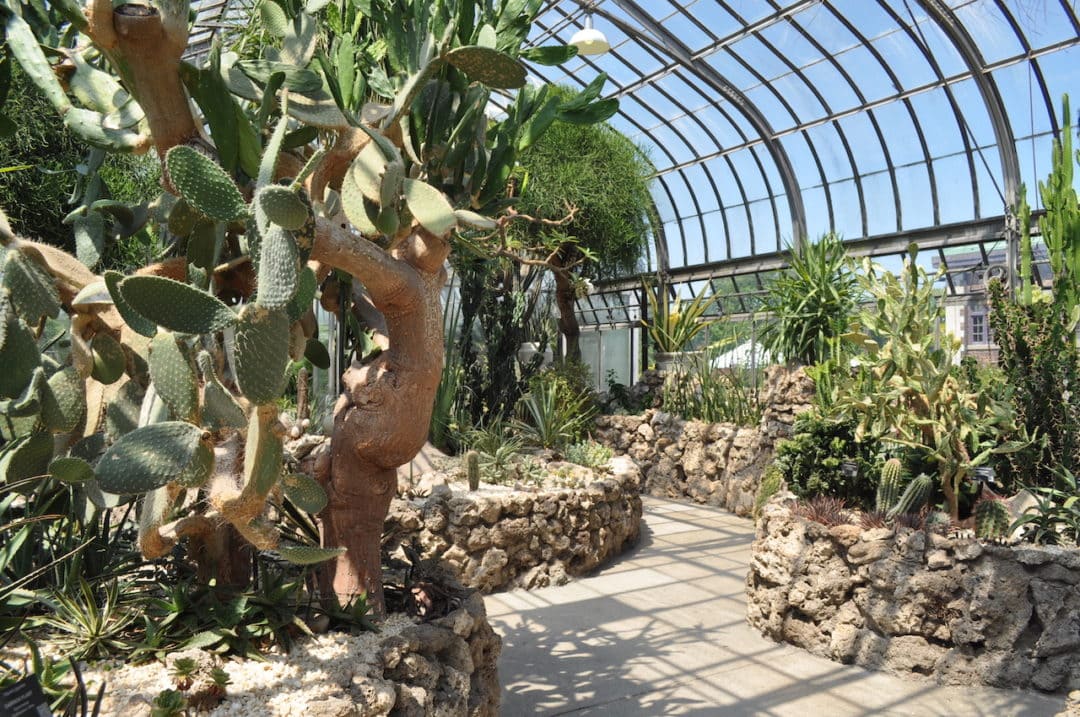
Recessed into the ground to provide cooler temperatures and more humidity, the Fernery holds only plants with feather-soft leaves. Steps lead down to the sunken path which coils through vibrant, overgrown greenery that spills into the walkway. The room is a relentless green; ferns do not flower or make seeds, but instead reproduce by spores. Green is associated with feelings of tranquility, a much-needed benefit at this point in the journey, because you’ll need to walk back through the Cactus House to rejoin the path.
Between prickly cactus plants, succulents also dot the beds of tufa rock in the Cactus House, mimicking everyday shapes and collecting whimsical names: Fried Pies, Devil’s Backbone, Jellybean, Mother of Thousands, Frizzle Sizzle, Christmas Cheer, Fairy Washboard.
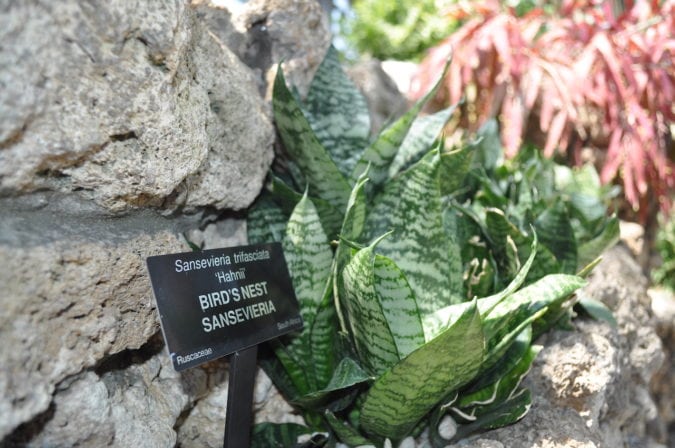
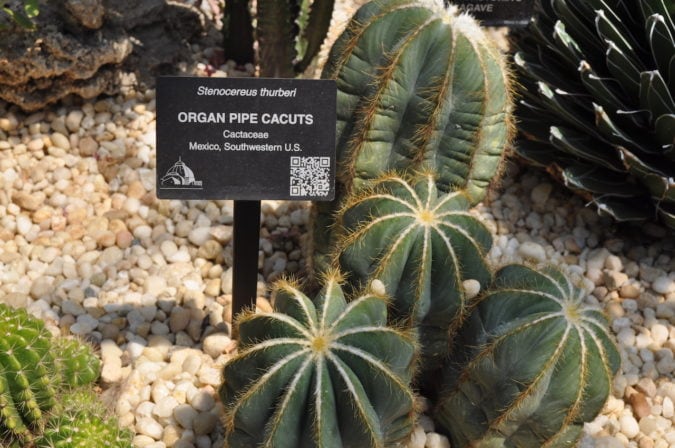
There’s something about succulents. They’re darling but self-sufficient, cute whether you give them water or not. Linger as long as you like, but there’s one last hidden gem at the exit of the conservatory you won’t want to miss.
On your way out, a small collection of carnivorous plants lies nestled in a glass case. In the wild, the Pitcher plant lures insects inside its cupped leaf with promises of the nectar held within. But once inside, insects find the walls of the leaf too slippery with nectar to climb out, and the plant digests the insects, using them to supplement the nutrients and minerals they take from the soil. If you’re lucky, you may also find plants like the Sundew, which produces a sticky mucilage to trap insects, or that perennial childhood obsession: the Venus flytrap.
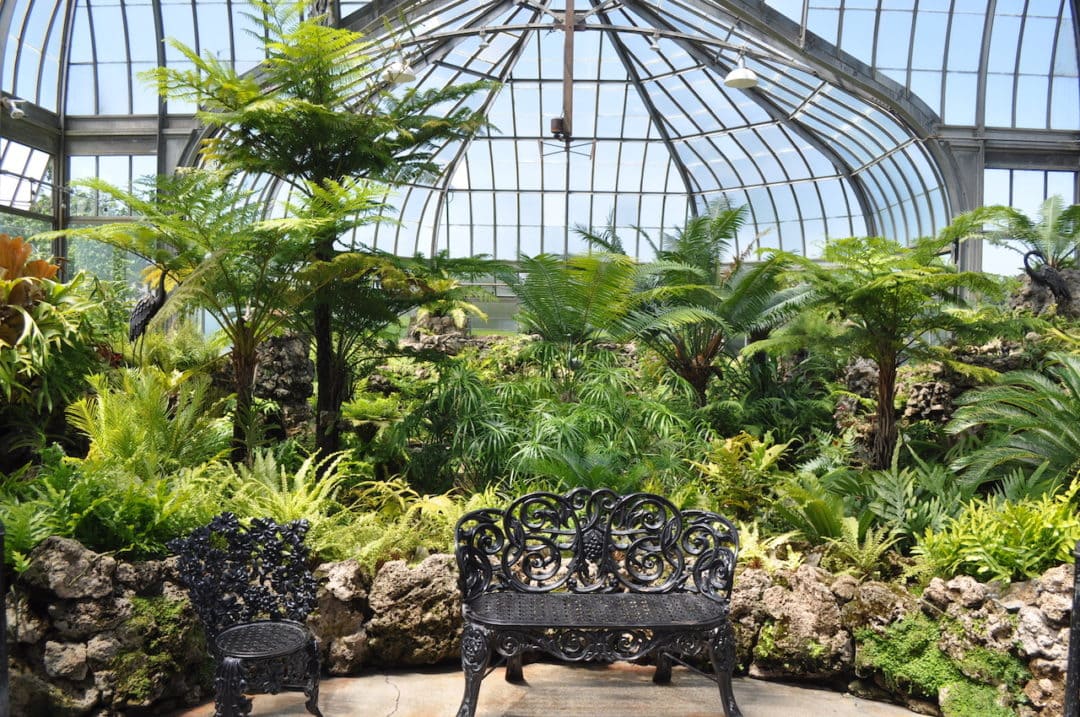
Outside, the conservatory claims another 12 acres for the botanical gardens and 20 private greenhouses used for plant cultivation and educational programs. But while the grounds are lovely, nothing quite approaches the magic or charm of the dense indoor foliage that makes it easy to forget that you are, after all, still in the city.
If you go
The Anna Scripps Whitcomb Conservatory celebrates its 115th anniversary this year on August 18. Visitors are welcome Wednesdays through Sundays, from 10 a.m. to 5 p.m., year round. Admission and parking are free, although since Belle Isle Park came under the management of the Michigan DNR as a state park, you may need to provide a state park pass or pay for a day pass for entry to the island itself.

